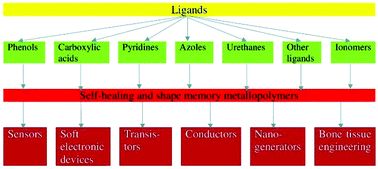Self-healing and shape memory metallopolymers: state-of-the-art and future perspectives
Abstract
Metallopolymers (MPs) or metal-containing polymers have shown great potential as self-healing and shape memory materials due to their unique characteristics, including universal architectures, composition, properties and surface chemistry. Over the past few decades, the exponential growth of many new classes of MPs that deal with these issues has been demonstrated. This review presents and assesses the latest achievements and problems associated with the use of MPs as self-healing and shape memory materials. Among the most widely used MPs with self-healing properties, metal complexes based on polymers containing phenol, carboxylic acid, pyridine, azole, histidine and urethane donor fragments are identified. Particular attention is paid to the principles of action of the shape memory MPs. Of considerable interest is the use of MPs as functional materials for sensors, soft electronic devices, transistors, conductors, nanogenerators, bone tissue engineering, etc. Finally, the problems and future prospects of MPs with self-healing and shape memory properties are outlined. This review also analyzes articles published over the past five years.

- This article is part of the themed collection: 2020 Frontier and Perspective articles


 Please wait while we load your content...
Please wait while we load your content...